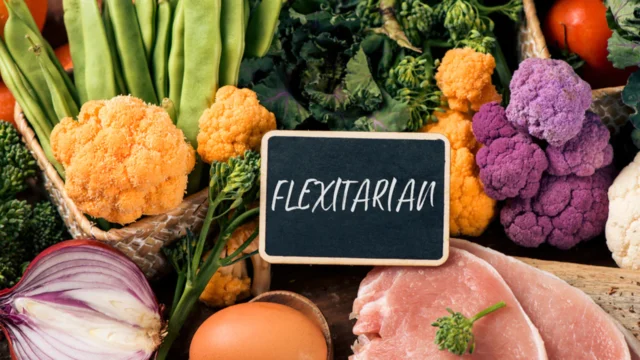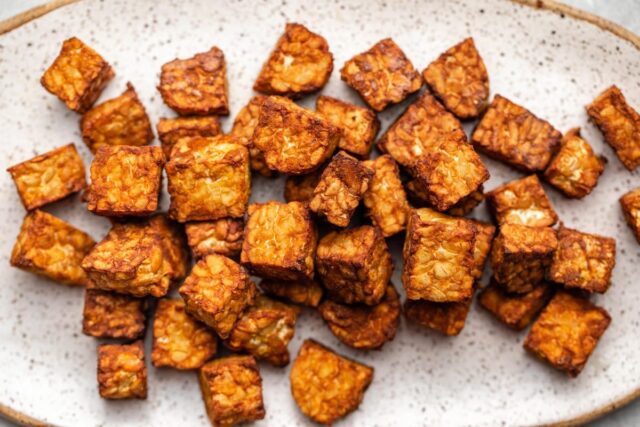
As people become more health and environmentally conscious, a new dietary trend is gaining popularity: flexitarianism. Flexitarianism is a mostly plant-based diet that allows for occasional meat consumption, making it a flexible and realistic option for those who want to reduce their meat intake without cutting it out entirely.
This dietary approach is becoming increasingly popular due to its many health benefits. Numerous studies have shown that a plant-based diet can reduce the risk of chronic diseases such as heart disease or diabetes. Additionally, reducing meat consumption can lead to lower levels of cholesterol, blood pressure, and body weight.

Not only is flexitarianism beneficial for personal health, it also has positive environmental impacts. The meat industry is a significant contributor to greenhouse gas emissions and deforestation, making reducing meat consumption an effective way to lower one’s carbon footprint.
In this article, we’ll explore the concept of flexitarianism in more detail and provide tips on how to start cutting down on meat without sacrificing flavor. We’ll discuss the benefits of adopting a flexitarian mindset and offer ideas for flavorful meat alternatives. By the end of this article, you’ll have the knowledge and tools you need to start transitioning to a healthier and more sustainable diet.
The Flexitarian Mindset

A flexitarian diet is a predominantly plant-based diet that allows for the occasional consumption of meat. Flexitarians focus on increasing their intake of plant-based proteins, whole grains, fruits, and vegetables, while minimizing their consumption of meat and other animal products.
Flexitarianism differs from vegetarianism in that it allows for occasional meat consumption. Vegetarians do not consume any meat, poultry, or fish. Some vegetarians may consume dairy or eggs, while others may follow a vegan diet and avoid all animal products.
Adopting a flexitarian mindset can have numerous benefits, such as increased variety in your diet and reduced reliance on processed foods. Plant-based proteins are a rich source of vitamins, minerals, and fiber, which can support overall health and well-being. Additionally, reducing meat consumption has been linked to a lower risk of chronic diseases.
If you’re looking to gradually reduce your meat consumption and transition to a more flexitarian diet, there are a few tips you can follow. Start by incorporating more plant-based proteins into your meals, such as beans, lentils, quinoa, and tofu. Experiment with new recipes and cuisines to keep your meals interesting and flavorful. To learn how to prepare an exquisite vegan meatloaf you can click on https://successrice.com/recipes/vegan-brown-rice-bbq-meatloaf/.
You can also try swapping meat for plant-based alternatives, such as veggie burgers or meatless crumbles, in some of your favorite dishes.
It’s important to remember that transitioning to a more flexitarian diet is a process, and it’s fine to take it slow. Gradually reducing your meat consumption and incorporating more plant-based foods can be a sustainable and healthy way to improve your diet and reduce your impact on the environment.
Flavorful Meat Alternatives

If you’re looking to reduce your meat consumption, incorporating flavorful and versatile meat alternatives can help make the transition to a flexitarian diet easier. Some of the most popular and delicious meat alternatives include tofu, tempeh, and seitan.
Tofu, made from soybeans, is a versatile and easy-to-prepare protein source. It has a neutral flavor, making it a great canvas for a variety of seasonings and marinades. It can be sliced, cubed, or crumbled to mimic the texture of meat in dishes like stir-fries, salads, and tacos.
Tempeh, made from fermented soybeans, has a nutty and slightly earthy flavor. It has a firm texture and can be sliced or cubed and used in a variety of dishes like sandwiches, stews, and curries. Tempeh is also a good source of protein and is rich in probiotics, which can support gut health.
Seitan, also known as wheat meat or wheat gluten, is a protein-rich alternative made from wheat gluten. It has a meat-like texture and can be used in a variety of dishes like stir-fries, stews, and sandwiches. Seitan is also a good source of iron and can be seasoned and flavored to imitate the taste of meat.
When preparing these meat alternatives, it’s key to keep in mind that they are a source of protein, but may not be a complete protein source. Combining them with other protein sources like legumes, nuts, or grains can help ensure you’re getting all the essential amino acids your body needs.
To maximize the flavor of these meat alternatives, marinating them before cooking can help infuse them with additional flavor. Using flavorful sauces and spices can also help enhance their taste. Roasting, grilling, or sautéing can help give them a crispy texture and highlight their natural flavors.
By incorporating flavorful and versatile meat alternatives like tofu, tempeh, and seitan into your meals, you can enjoy a variety of delicious and healthy dishes while reducing your meat consumption.
Rounding Things Up

In conclusion, a flexitarian diet can offer numerous benefits for both our health and the environment. By reducing our meat consumption, we can increase our intake of nutritious plant-based foods and reduce our risk of chronic diseases. Additionally, we can lower our carbon footprint and help reduce the negative impact of industrial animal agriculture on the planet.
Adopting a flexitarian mindset doesn’t have to be a drastic change, and it can be done gradually by incorporating more plant-based proteins into our meals and experimenting with new flavors and cuisines. Simple steps like trying a new recipe or swapping out meat for a plant-based alternative a few times a week can make a big difference.

To get started, readers can explore some of the most flavorful and versatile meat alternatives like tofu, tempeh, and seitan, which can be prepared in a variety of ways to mimic the taste and texture of meat. And by sharing their experiences with others and encouraging friends and family to try new plant-based foods, readers can contribute to a larger movement of flexitarians who are promoting a healthier and more sustainable food system.
In conclusion, a flexitarian diet can be a delicious and rewarding way to improve our health and the health of the planet. By taking small steps to reduce our meat consumption and incorporate more plant-based foods into our meals, we can make a positive impact on our lives and the world around us.












